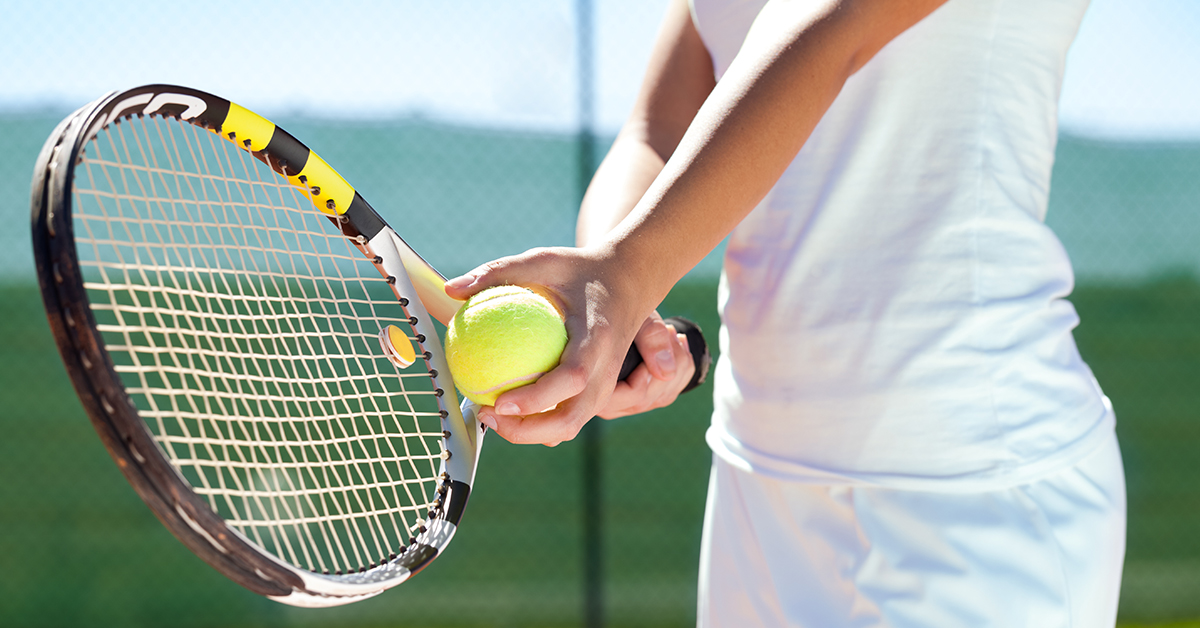
The last thing a golfer or tennis player wants is an elbow injury that limits or sidelines them. In order to keep your elbows in great shape, follow the information and advice outlined in this article.
Elbow Anatomy
The elbow joint is formed by the humerus (upper arm bone) and the two forearm bones (radius and ulna). Ligaments stabilize the joint and several muscles and tendons help move it. The two key elbow movements are:
- Bending and straightening the arm
- Twisting and rotating the forearm
Because golf and tennis require these movements while impacting a ball, the sports place a great deal of stress and strain on the joint.
Common Injuries
The two most common elbow injuries sustained by golfers and tennis players are:
- Golfer's elbow (medial epicondylitis) - Inflammation of the tendons that insert on the medial, or inside, portion of the elbow.
- Tennis elbow (lateral epicondylitis) - Inflammation of the tendons that insert on the lateral, or outside, portion of the elbow.
It is important to note the names of the above-mentioned injuries may be misleading. Both athletes can sustain either injury.
Symptoms
The symptoms of golfer's elbow and tennis elbow are the same. As previously mentioned, location determines which injury patients have. Any, all, or any combination of the following symptoms may present:
- Elbow pain
- Forearm pain
- Tenderness
- Swelling
- Numbness or tingling in the wrist, hands, and/or fingers
- Weakness
- Stiffness
Symptom severity typically increases when the injury is not treated properly.
Treatment and Prevention
Luckily, golfer's elbow and tennis elbow are easily treatable and future injury is easily preventable. Upon the initial presentation of symptoms, patients should follow the following steps:
- Apply ice - Applying ice for 20-30-minutes quickly decreases inflammation, swelling, and pain. In many cases, applying ice for a few hours will provide significant relief.
- Take an over-the-counter (OTC) anti-inflammatory medication - Like ice, OTC anti-inflammatory medications decrease inflammation, swelling, and pain. Common medications include Excedrin, Advil, Motrin, and Aleve.
- Rest - A 2-3-day break from practicing and playing is generally enough time.
In order to prevent future injuries, the following measures may be taken:
- Bracing - A brace supports the elbow and takes stress off the ligaments, muscles, and tendons.
- Physical therapy - Exercises stretch and strengthen muscles and improve joint function.
- Warm up properly - Warming up ensures the elbow is ready for activity.
- Improve form - Swinging the club or racquet properly reduces the load placed on the joint.
- Use proper equipment - A club or racquet that is too heavy may put players at risk.
- Modify activities and/or rest - When pain presents, modify or stop activities until it goes away.
When proper treatment and preventative measures are taken, golfers and tennis players can expect minimal to no discomfort when playing the sports they love.
Seeking Treatment
If you injure your elbow and have severe symptoms or symptoms that do not improve after the above-mentioned treatment options are used, an appointment with an orthopedic should be made. Your condition may be something other than golfer's elbow or tennis elbow. A medical history, physical examination, and possibly medical imaging studies will help diagnose and treat your injury.

